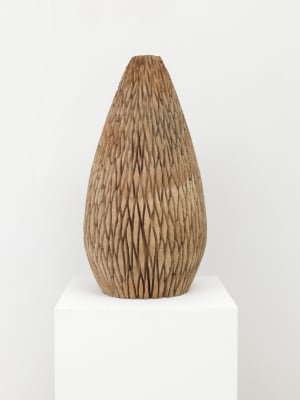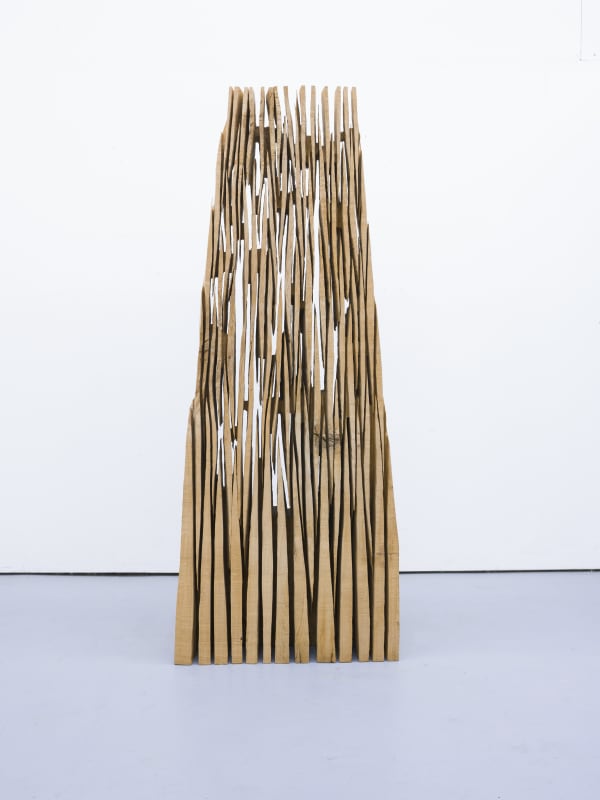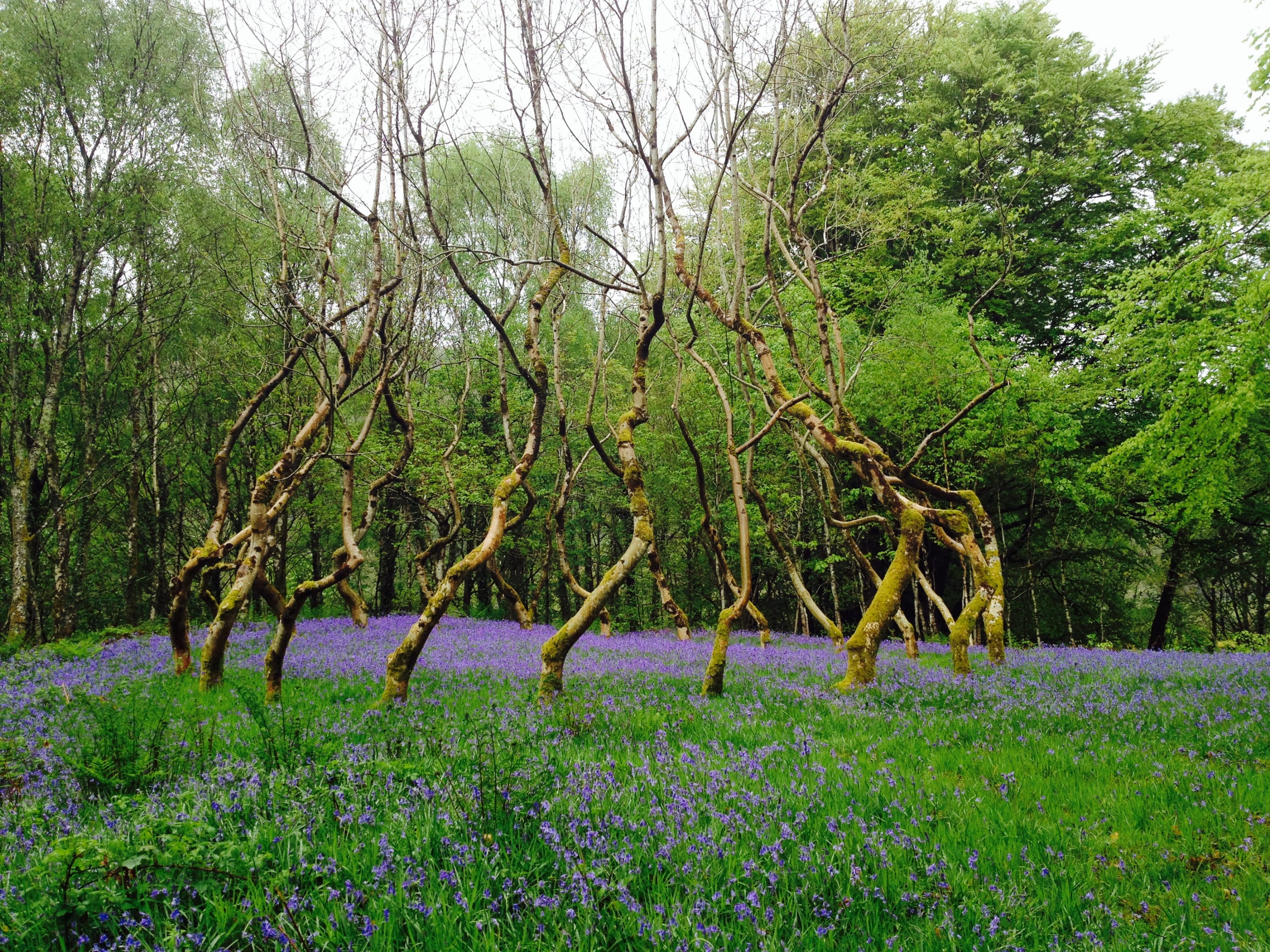Annely Juda Fine Art is pleased to offer a selection of new sculptures from David Nash’s studio. All created in 2020 (bar one work ‘Streaming Vessel’ from 1999, which has recently been made available), this group of sculptures show Nash’s continued, masterful exploration of natural wood forms transformed through carving, cutting and - in places – charring, to create exquisitely unique works.
The organic nature of the wood is intermittently juxtaposed with geometric order; the triangle or pyramid is a common theme in David Nash's work, a form he has returned to throughout his career. This time, Nash’s signature Pyramid, Sphere, Cube is replaced by Triangle, Circle, Square. The broad open spaces in the grain of the oak of this work is mirrored in his other shelf work Two Caves where he exploits the voids in the timber (as reflected in the title). The blackness created by the charring of the oak further emphasises the spaces in between the sculptures. Likewise, the partial charring of the redwood in the wall sculpture Overlap Panel further delineates the chevrons carved into the face of the work, while underlining the stunning natural colour of the redwood.
The other three sculptures on view here have been chainsaw carved and left uncharred. We can see Nash’s practice of cutting with the chainsaw to underline forms and movement already existing within the wood, from the earlier Streaming Vessel (1999), with its lines and cuts describing fluid movement and containment, through to Diamond Cut Egg (the egg is another recurring motif in Nash’s work) and the largest sculpture, See Through Oak, where the wood is opened up and sliced through with vertical cuts, this time highlighting the voids and cuts with light rather than dark.
We hope you enjoy this selection of works and don’t hesitate to contact us with any questions or click on the individual works to enquire.
-
David Nash
Nash has developed his sculpted work consistently over the last five decades, placing trees at the centre of his exploration. His intimate knowledge of their characteristics, both in life and in the process of change that continues after their being cut down, has informed his artistic development. He works primarily with wood that has fallen naturally or has been felled due to age, disease or safety. He also makes planted works; living, growing sculptures; long term projects that span decades.
Nash carefully chooses the way he treats the wood, allowing its inherant natural qualities to inform the final shape of the work. Meanwhile, the effect of charring some of his wooden sculptures varies according to species: "charred beech, charred oak and charred tulip are not the same black; charred mahogany adds an evident colour to black", says David Nash.Trees are made of earth, air and water; three primary elements which David Nash often complements with fire, by charring the surface of his wooden sculptures. As Nash states, earth represents material, air represents space, water represents movement and fire represents light. Nash allows the four primary elements to inform his entire practice, whether it be in the form of wood, metal or pigment on paper.
Please click here for further information on the artist.
-
David Nash In The Studio
David Nash has lived and worked in the small town of Blaenau Ffestiniog, North Wales since the late 1960's. He converted an old chapel into a studio, which now offers a viewing space for his works, having expanded to workshops and a drawing studio nearby. Nash's living sculpture, Ash Dome (1977-) is located in the forest nearby.
-
David Nash
Born in 1945 in Esher, Surrey
Lives and works in Blaenau Ffestiniog, North Wales since 1967
Elected a Royal Academician in 1999
Awarded OBE for services to the arts in 2004
International solo exhibitions throughout his career including the Yorkshire Sculpture Park, Wakefield; Royal Botanical Gardens, Kew; Kunsthalle Mannheim, Germany; Fukuoka Art Museum, Japan and the National Museum Cardiff, Wales.
Works are held in many international public collections including the Royal Academy of Arts, London; Tate Gallery, London; Solomon R. Guggenheim Museum, New York and the Centre Pompidou, Paris.










